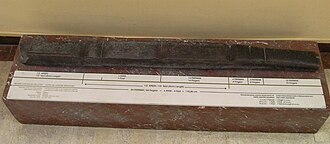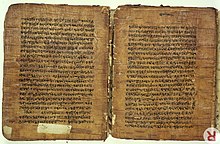
Geometry arose as the field of knowledge dealing with spatial relationships. Geometry was one of the two fields of pre-modern mathematics, the other being the study of numbers (arithmetic).

The history of mathematics deals with the origin of discoveries in mathematics and the mathematical methods and notation of the past. Before the modern age and the worldwide spread of knowledge, written examples of new mathematical developments have come to light only in a few locales. From 3000 BC the Mesopotamian states of Sumer, Akkad and Assyria, followed closely by Ancient Egypt and the Levantine state of Ebla began using arithmetic, algebra and geometry for purposes of taxation, commerce, trade and also in the patterns in nature, the field of astronomy and to record time and formulate calendars.
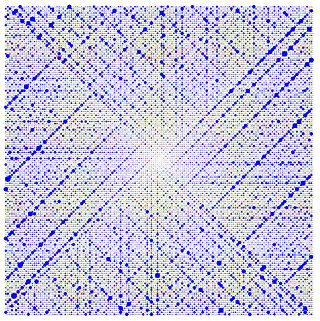
Number theory is a branch of pure mathematics devoted primarily to the study of the integers and arithmetic functions. German mathematician Carl Friedrich Gauss (1777–1855) said, "Mathematics is the queen of the sciences—and number theory is the queen of mathematics." Number theorists study prime numbers as well as the properties of mathematical objects constructed from integers, or defined as generalizations of the integers.

Aryabhata or Aryabhata I was the first of the major mathematician-astronomers from the classical age of Indian mathematics and Indian astronomy. His works include the Āryabhaṭīya and the Arya-siddhanta.
Brahmagupta was an Indian mathematician and astronomer. He is the author of two early works on mathematics and astronomy: the Brāhmasphuṭasiddhānta, a theoretical treatise, and the Khaṇḍakhādyaka, a more practical text.

Bhāskara II, also known as Bhāskarāchārya, and as Bhāskara II to avoid confusion with Bhāskara I, was an Indian mathematician, astronomer and inventor. From verses in his main work, Siddhāṁta Śiromaṇī (सिद्धांतशिरोमणी), it can be inferred that he was born in 1114 in Vijjadavida (Vijjalavida) and living in the Satpuda mountain ranges of Western Ghats, believed to be the town of Patana in Chalisgaon, located in present-day Khandesh region of Maharashtra by scholars. He is the only ancient mathematician who has been immortalized on a monument. In a temple in Maharashtra, an inscription supposedly created by his grandson Changadeva, lists Bhaskaracharya's ancestral lineage for several generations before him as well as two generations after him. Colebrooke who was the first European to translate (1817) Bhaskaracharya II's mathematical classics refers to the family as Maharashtrian Brahmins residing on the banks of the Godavari.

Greek mathematics refers to mathematics texts and ideas stemming from the Archaic through the Hellenistic and Roman periods, mostly from the 5th century BC to the 6th century AD, around the shores of the Mediterranean. Greek mathematicians lived in cities spread over the entire region, from Anatolia to Italy and North Africa, but were united by Greek culture and the Greek language. The development of mathematics as a theoretical discipline and the use of deductive reasoning in proofs is an important difference between Greek mathematics and those of preceding civilizations.
Indian mathematics emerged in the Indian subcontinent from 1200 BCE until the end of the 18th century. In the classical period of Indian mathematics, important contributions were made by scholars like Aryabhata, Brahmagupta, Bhaskara II, and Varāhamihira. The decimal number system in use today was first recorded in Indian mathematics. Indian mathematicians made early contributions to the study of the concept of zero as a number, negative numbers, arithmetic, and algebra. In addition, trigonometry was further advanced in India, and, in particular, the modern definitions of sine and cosine were developed there. These mathematical concepts were transmitted to the Middle East, China, and Europe and led to further developments that now form the foundations of many areas of mathematics.
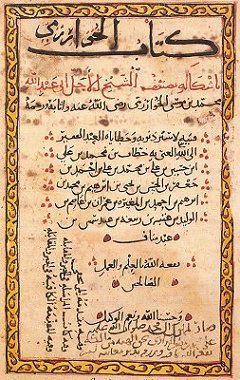
Mathematics during the Golden Age of Islam, especially during the 9th and 10th centuries, was built on Greek mathematics and Indian mathematics. Important progress was made, such as full development of the decimal place-value system to include decimal fractions, the first systematised study of algebra, and advances in geometry and trigonometry.
The history of mathematical notation includes the commencement, progress, and cultural diffusion of mathematical symbols and the conflict of the methods of notation confronted in a notation's move to popularity or inconspicuousness. Mathematical notation comprises the symbols used to write mathematical equations and formulas. Notation generally implies a set of well-defined representations of quantities and symbols operators. The history includes Hindu–Arabic numerals, letters from the Roman, Greek, Hebrew, and German alphabets, and a host of symbols invented by mathematicians over the past several centuries.

The following outline is provided as an overview of and topical guide to trigonometry:

Early study of triangles can be traced to the 2nd millennium BC, in Egyptian mathematics and Babylonian mathematics. Trigonometry was also prevalent in Kushite mathematics. Systematic study of trigonometric functions began in Hellenistic mathematics, reaching India as part of Hellenistic astronomy. In Indian astronomy, the study of trigonometric functions flourished in the Gupta period, especially due to Aryabhata, who discovered the sine function, cosine function, and versine function.
Algebra can essentially be considered as doing computations similar to those of arithmetic but with non-numerical mathematical objects. However, until the 19th century, algebra consisted essentially of the theory of equations. For example, the fundamental theorem of algebra belongs to the theory of equations and is not, nowadays, considered as belonging to algebra.

This is a timeline of mathematicians in ancient Greece.
A timeline of numerals and arithmetic.
The following is a timeline of key developments of geometry:

A timeline of calculus and mathematical analysis.
This is a timeline of pure and applied mathematics history. It is divided here into three stages, corresponding to stages in the development of mathematical notation: a "rhetorical" stage in which calculations are described purely by words, a "syncopated" stage in which quantities and common algebraic operations are beginning to be represented by symbolic abbreviations, and finally a "symbolic" stage, in which comprehensive notational systems for formulas are the norm.
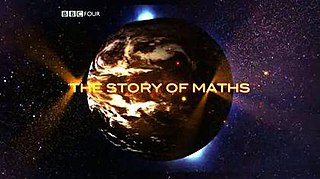
The Story of Maths is a four-part British television series outlining aspects of the history of mathematics. It was a co-production between the Open University and the BBC and aired in October 2008 on BBC Four. The material was written and presented by University of Oxford professor Marcus du Sautoy. The consultants were the Open University academics Robin Wilson, professor Jeremy Gray and June Barrow-Green. Kim Duke is credited as series producer.
